| Title | Mean square slope measurements in the field with the reflective stereo slope gauge |
| Publication Type | Conference Paper |
| Year of Publication | 2011 |
| Authors | Kiefhaber, D, Rocholz, R, Schaper, J, Balschbach, G, Jähne, B |
| Conference Name | EGU General Assembly, Vienna |
| Abstract | An optical instrument for the measurement of surface ocean small-scale wave statistics has been developed. This reflective stereo slope gauge (RSSG) is capable of simultaneous measurements of height and slope statistics of the water surface in the field. The instrument is a significant technical improvement of the early work by Waas and Jähne (1992) and comprises a stereo camera setup, artificial light sources and a wind following system. The measurement principle is similar to Cox & Munk's derivation of slope statistics from photographs of Sun glitter (Cox and Munk, 1954). However, the RSSG uses artificial light sources instead of relying on natural illumination and can thus be used independent of daytime or cloud cover. The probability distribution of the occurrence of specular reflections at given image coordinates can be related to the probability distribution of the surface slope, if the position of the instrument relative to the water surface is known. The slope probability distribution is measured for small slopes up to 0.15. From this partial probability distribution, estimates of the mean square slope (mss) and other statistical parameters can be extracted. The distance from of the instrument to the water surface is obtained from stereo triangulation, while an inclination sensor measures its tilt. Stereo triangulation at the specular reflecting water surface requires the use of two light sources in complementary positions to ensure that both cameras detect reflections coming from the same surface patches. Furthermore, to guarantee that each camera can only sees the corresponding light source, the stereo images are acquired sequentially and the LED light sources are pulsed. The water surface does not change significantly in between the image acquisitions, since the exposure time (and thus the minimum delay of the second image acquisition) is limited to 0.2 ms. The instrument can measure the along-wind and cross-wind mean square slope components, even under varying wind conditions. A wind following system was implemented that is able to rotate the stereo base to keep it aligned in an along-wind or cross-wind direction. Even though the instrument cannot record slope time series and only makes statistic measurements, it has significant advantages over other techniques that are commonly used. Measurements are non-invasive (no instrument parts suspended into or submersed in water) and mostly independent of natural illumination (light source peak wavelength is 940 nm, IR filters suppress skylight, only direct sun glitter may cause complications), not influenced by upwelling light (strong absorption of light at 940 nm by water) and have a spatial resolution that allows the measurement of slope statistics also for capillary waves. At the same time, the (gravity) wave amplitudes can be inferred from the stereo information. The RSSG was characterized and tested in the laboratory and deployed to the Baltic Sea in July and September 2010 to perform local wave statistics measurements at the footprint of heat exchange experiments with the active controlled flux technique (Schimpf et al., 2010). First results from these experiments that demonstrate the capability of the RSSG to measure wave slope statistics in a variety of conditions are presented. |
| DOI | 10.5281/zenodo.12331 |
| Citation Key | kiefhaber2011a |


